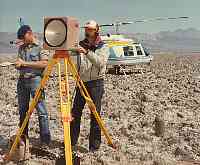

A new adapter now allows the rifle to be connected to a CO2 tank.

But until now, the AirForce guns had never been able to use this gas.

For some shooters, running any airgun on CO2 fed from a large bulk tank is ideal simply because you can shoot forever before needing to top off the tank. Knowing its characteristics I knew the velocity would be lower and there would also be more usable shots on a fill of gas. But that experience was all shooting with air CO2 was a new adventure. I already had a long background with all three AirForce guns from both my times testing them as an airgun writer and the three years I worked at the AirForce plant. Like the new CO2 adapter for AirForce air rifles - I got to test all three rifles before anyone. Maintaining these cells takes a special group of airmen willing and capable to contort and fit themselves into the body of this aircraft.I have the best job in the world, because when new stuff comes out, I get to test it. The system is made up of massive, black bladders that hold jet fuel within the wings and run down the bottom of the KC-135 fuselage. "Tank Divers," as the technicians of this shop are called, work day-and-night to ensure MacDill's aircraft are always ready to fuel the fight.įuels technicians handle all operations involving the pumps, valves, manifolds and all aspects that encompass the fuel cell, which the Tank Divers view as the heart of the aircraft. This hangar is the home of the 6th Maintenance Squadron's fuels systems section. On a given day, peeking out of that hangar will sit a KC-135 Stratotanker aircraft seemingly out of place in the considerably smaller maintenance shop, but surely, it's in the right hands. Tucked away behind US Central Command and MacDill Air Force Base, Florida's traditional hangars lies a hangar originally built to house fighter jets. Account icon An icon in the shape of a person's head and shoulders.


 0 kommentar(er)
0 kommentar(er)
